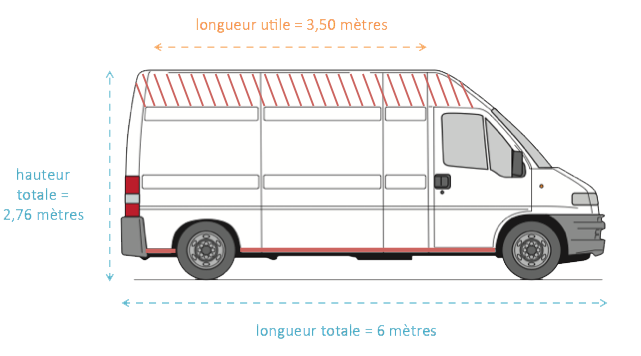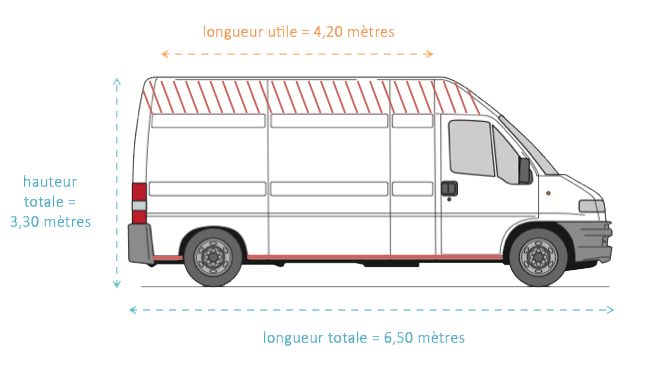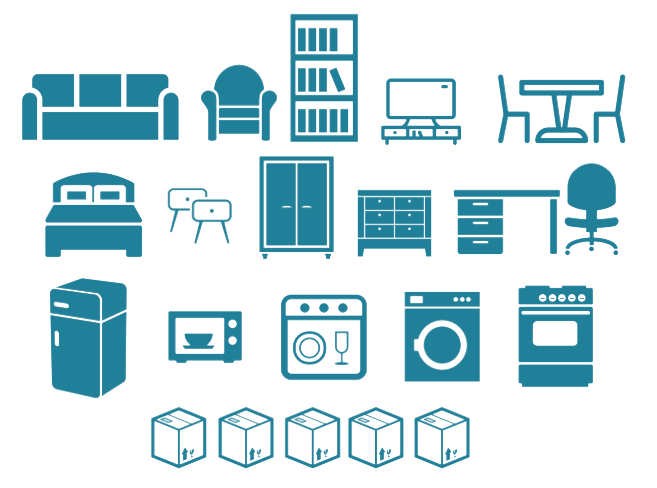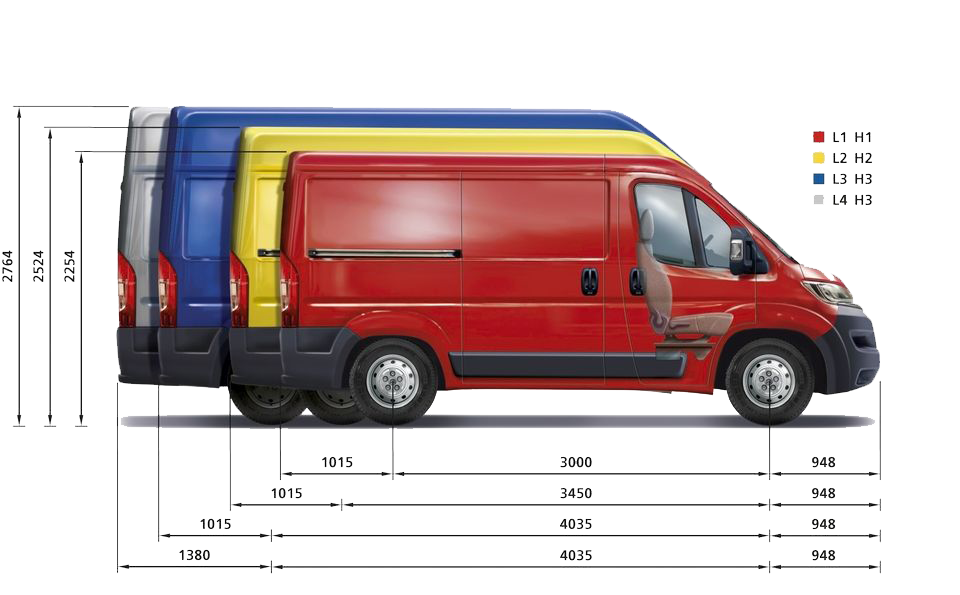The choice of vehicle depends on a number of factors, including the size of your business, the type of products you deliver, the distance you cover and the frequency of your deliveries. Choosing the right vehicle can have a considerable impact on your profitability and operational efficiency. Here are some factors to consider when choosing a delivery vehicle.
Size and load capacity
Vehicle size is one of the most important factors to consider when choosing a delivery vehicle. If you need to transport large or bulky products, a van or truck may be the best option. If you are delivering smaller, lighter products, a van or passenger vehicle may be more appropriate.
Loading capacity is also important. If you deliver products in large quantities, you will need a vehicle with sufficient loading capacity to carry your entire stock. This can be determined by the weight and volume of the products you are carrying.
3 m³ vehicle

The 3 m³ vehicles are ideal for small businesses or low-volume deliveries. They are compact and easy to manoeuvre, making them ideal for deliveries in towns or densely populated areas. These vehicles can be driven with a category B driving licence.
Vehicles with a capacity of 3 m³ can carry around 300-400 kg of goods, making them a good option for small loads. They are often fitted with a rear tailgate for easy loading and unloading of goods. They are also more fuel-efficient than larger vehicles, which can help reduce operating costs.
On average, a 3m³ van can accommodate 6 standard-size boxes (50x40x35cm) and 2 small boxes (34.5x27x30cm).

10/12 m³ vehicle

10 m³ vehicles are a good choice for medium-sized businesses or companies needing to transport larger volumes of goods. These vehicles can carry approximately 1,000 kg of goods, three times as much as 3 m³ vehicles.
The 10 m³ vehicles are generally equipped with sliding side doors for easy loading and unloading of goods. They can be driven with a category B driving licence.
It's quite common to say that 10 / 12 m³ generally corresponds to moving a studio or a small 2-room apartment, since it's customary to divide the surface area of the apartment by two to determine the volume to be moved.
So a 10 / 12 m³ corresponds to a living space of about 20-25 m²!

20 m³ vehicle

20 m³ trucks are used by large delivery companies or businesses needing to transport large quantities of goods over long distances. These vehicles can carry approximately 2000 kg of goods, making them ideal for heavy loads.
20 m³ trucks are often fitted with an elevating tailgate to ease loading and unloading. Note, however, that a tailgate cannot support a load heavier than 600 kg.
The 20 m³ van is ideal for moving areas of 40 to 50 m².

What does L2H2 mean?

For vans in the 10/12 m³ size range, these are the usual designations. But what do they really represent?
Many vehicle brands use these names to differentiate van sizes:
- The letter "L" indicates vehicle length
- The letter "H" refers to its height
Thus, L2H2 represents the smallest size (vehicle length 2 and height 2). There are also combinations such as L1H2 (vehicle length 1 and height 2).
These names help to visualise and identify variants of the same range and brand.
Other factors to consider
In fact, in addition to the type of vehicle, there are a number of other factors you need to take into account to make the right choice and save time.
Drive type
The type of driving you do will also affect your choice of vehicle. If you drive in the city, you will need a compact, manoeuvrable vehicle that is easy to park and navigate on narrow streets. If you drive long distances or on country roads, a larger, more robust vehicle may be required.
Operating costs
Operating costs are an important factor to consider when choosing a delivery vehicle. Larger, heavier vehicles tend to consume more fuel, which can lead to higher operating costs. Smaller vehicles may be more fuel-efficient, but they may not be as effective for transporting large volumes.
Maintenance and repairs
Maintenance and repairs are unavoidable costs for any delivery vehicle. Larger, older vehicles tend to require more maintenance and repairs than smaller, newer vehicles. So it is important to take these costs into account when choosing a vehicle.
In conclusion, the choice of delivery vehicle depends on a number of factors, including the size and weight of the products you transport, the type of driving you do, operating costs and maintenance and repair costs. In addition, the choice of delivery vehicle depends on the size of your business, the volume of goods you transport and the distance you cover. 3 m³ vehicles are compact and easy to manoeuvre, while 10 m³ and 20 m³ vehicles are more suitable for larger loads. It's important to consider the characteristics of each vehicle size when choosing the one that best suits your company's needs. By taking these factors into account, you can choose the vehicle that best suits your company's needs and enables you to deliver your products efficiently and cost-effectively.

.png)


